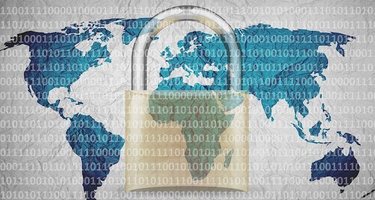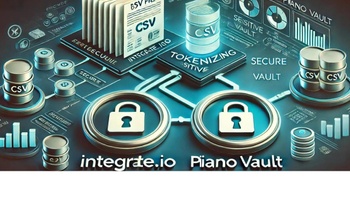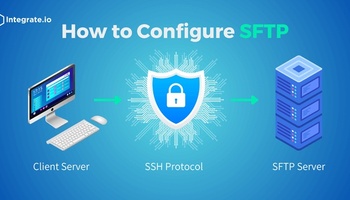- Data Security: A General Definition
- Why is Data Protection Important?
- Why Protect Data Privacy?
- How Has Data Security Changed?
- Is Cybersecurity the Same As Data Security?
- What is Access Control When We Discuss Data?
- What Are GDPR, CCPA, and LGPD?
- What Are Data Security Options?
- How is Data Security Protected in ETL?
- How Does Integrate.io Ensure Data Security?
There is no more important topic when it comes to big data than data security. This is a broad subject that involves the protection of business assets as well as the safeguarding of individual rights, in compliance with laws and regulations.
So, what is data security? This article breaks down the most important issues so you can lead your organization in the right direction.
Data Security: A General Definition
In the early days, data security was about the business. Specifically, data security was focused on protection from damage, loss, or theft by a competitor. Now, data security has moved beyond these concerns. That's due in large part to the increasing practice of organizations to collect data on individuals, such as customers, clients, patrons, or, in the case of health care, patients. Data security involves keeping data physically secure as well as safe from hacking. This is done through encryption, hashing, and tokenization, among other methods.
Why is Data Protection Important?
Data is essential to business success. It is the raw information businesses use to develop products, interact with customers, and define their internal operations. In addition, in the case of personally identifying data, such as private or personal information on individuals, some laws require data protection measures to be in place such as the General Data Protection Regulation (GDPR) in the European Union and the California Consumer Privacy Act (CCPA) in California.
Why Protect Data Privacy?
Not protecting data privacy can leave an organization open to fines or lawsuits from those whose privacy has been violated. Making sure you follow the law is only one concern, however. There is also the issue of consumer and client trust. When consumers interact with your organization, there's an implicit agreement that you will keep their information safe and protect against its unauthorized use or release. Violating this trust can have devastating public relations consequences for private businesses and health care organizations alike.
How Has Data Security Changed?
While data security once focused on physical security, new storage protocols and the types of information that businesses hold have changed that focus. Now, most storage is cloud-based, so encryption protocols are particularly important since the risk of physical damage to a hard drive is less likely. In addition, since more personal information is collected, there is a greater need for data masking, anonymization, and tokenization so that personal information is not released in the event of a breach.
Is Cybersecurity the Same As Data Security?
These terms are often used interchangeably. However, some experts say data security is more narrow. Data security is about safeguarding the information itself. Cybersecurity, however, is broader, including not only information and data, but entire systems. In practice, data security will involve some level of cybersecurity, as there are at least two levels of security: protecting the systems from attack and also hiding the data itself so nothing is revealed in the event of exposure.
What is Access Control When We Discuss Data?
Access control refers to who is allowed to view certain data. This refers not only to the type of information that one might access but the individuals who have that authority and for what purpose as well. In general, access control is limited within organizations, and those who can access information have a deep responsibility to keep it secure. That means following internal access control protocols. It also means the organization uses technology to prevent individuals from accessing information they should not be allowed to see.
What Are GDPR, CCPA, and LGPD?
The GDPR, CCPA, and Brazilian General Data Protection Law (LGPD) are three examples of laws that put obligations on companies to protect personal information. They vary in their scope and reach. The GDPR is an EU law but places an obligation on all companies who access the information of EU citizens, regardless of where the business is located. These laws mean it is incumbent upon businesses to not only think about their own business when it comes to data privacy and security but the legal repercussions if they fail to uphold consumer and client privacy.
What Are Data Security Options?
There are a number of different options when it comes to ensuring data security. These involve securing the data itself as well as the technology that stores and protects the data. The range of options for data security can look like a laundry list of items, but they all can be a vital piece of the puzzle when it comes to making sure your information assets are protected. They include:
- Data encryption: This happens at the level of the data itself. Data is encrypted so in the event of accidental exposure or hack, what's revealed is the false or encrypted data, not the actual information.
- Data masking: This also happens at the level of data itself, whereby portions of a data string are replaced with asterisks or similar masking characters. An example is blocking out most digits in a credit card of social security number so system users do not have access to the full string.
- Firewalls and external protocols: This is about securing the environment where the data lives. A firewall blocks out viruses, unauthorized access, and any routes to reach the data from the outside.
- Access control and internal protocols: This is also about securing the environment, but from within the organization. It involves such measures as limiting who has access to what kinds of data, internal passwords, and security keys, as well as developing a culture of high data security.
- Data erasure: Old or redundant data should be erased. This protects the data simply because it isn't available. In some cases, this is required by law. As a result of the GDPR, for example, companies must sometimes delete E.U. customer data on demand.
- Safe data storage: This makes sure that the physical environment that holds the data is safe from corruption or damage. In modern usage, data storage typically refers to cloud-based environments. Previously, this referred to hard drives and storage backup software that lived on the premises of an organization.
A robust data security scheme identifies all potential areas of risk for an organization and works toward removing or mitigating that risk. That typically involves implementing some or all of these data security options.
How is Data Security Protected in ETL?
The ETL process helps organizations to ensure data security. This is done in at least two ways. The first is the nature of the data transformation process itself. As data is transformed in ETL, it is cleansed before it is loaded into a warehouse. This cleansing process removes corrupt and duplicate data. The second is how ETL helps organizations to manage large amounts of data, much of it sensitive or personally identifiable. ETL is an automated method to bring data together from various sources. Users can employ ETL to hash, or flag, sensitive information in order to mask that information. ETL also encrypts data before it is loaded into a warehouse at the final stage of the process.
How Does Integrate.io Ensure Data Security?
As an ETL platform, Integrate.io addresses all parts of the process that ensures data security. But Integrate.io goes a few steps further, providing users with the assurance their data is subject to the highest levels of protection, including:
- SSL/TLS encryption: This provides secure communication over the network.
- Encryption of data “at rest”: Sensitive data on the Integrate.io platform is encrypted even when not in use during an ETL process or other platform activity.
- Amazon data center accreditations: Integrate.io is managed by Amazon Web Service (AWS) and therefore has access to its data center accreditations.
- Firewall-based access control: Integrate.io defaults to a secure firewall that you can modify based on your organization's business needs and preferences.
- Compliant with the U.S. and International regulations: Integrate.io meets the requirements of the GDPR, CCPA, and the Health Insurance Portability and Accountability Act (HIPAA), as well as being SOC 2 certified.
These are just some of the ways that Integrate.io's innovative ETL platform ensures the security of your organization's data. Integrate.io is a code-free platform, making it easier for those without coding skills to develop new pipelines. Integrate.io also adheres to the highest levels of current data security technology while remaining suitable to a wide range of users.
Data security is of the utmost importance for small and large organizations alike. Fortunately, there are a number of protocols that businesses can implement to safeguard this precious asset. They can ensure this data security even during the transformation of large data sets through ETL.
Integrate.io puts security at the forefront of its features. Learn more today about how Integrate.io can expedite your data transformation while keeping your information secure. Contact us for a demo and risk-free trial.











